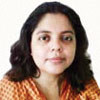Republic at 65: Still a long journey ahead

The Indian Republic turns 65 today. Sixty four years ago, this day at 10:18 a.m. Indian Standard Time, India became a sovereign democratic republic with the inauguration of her constitution at a solemn ceremony held in the grandiose durbar hall of the then majestic government house — currently the official residence of the nations’ President in New Delhi.
The proclamation announcing the birth of a new republic was read by the last Governor-General cum representative of the British Monarch, Chakravarthi Rajagopalachari.
President Rajendra Prasad, first head of state of the Indian Republic, took military salute at a spectacular parade of the defense services the same afternoon in front of 20,000 enthusiastic spectators.
A host of dignitaries, including guest of honor President Sukarno of Indonesia, Prime Minister Jawaharlal Nehru and his cabinet colleagues, members of parliament, diplomatic corps posted in the Indian capital as well as jubilant men, women and children from all walks of life thronged the venue.
The date, Jan. 26, 1950, undoubtedly remains the first landmark in independent India’s struggle to realize the dreams of millions of citizens and freedom fighters who made supreme sacrifices for achieving the goal of transforming India into a democratic nation, guided by the principles of justice, liberty, equality and fraternity.
The nations’ founding fathers with all their collective wisdom have set lofty ideals of empowering the last person in the last row.
Indeed, the basic tenets of the Indian constitution aims at establishing conditions necessary for fostering social revolution in a new born country.
Granville Austin, the renowned historian and a leading authority on Indian constitution too found the hallowed book to be no less than a social document.
Constitutional drafting committee chairman Dr. Bhim Rao Ambedkar was of the opinion that provisions incorporated therein will ensure “that the Indian federation will not suffer from the faults of rigidity or legalism.”
And as India once again unfold the kaleidoscope of colors embedded deep within her cultural diversity, her growing economic clout and military might at the national capitals’ ceremonial boulevard called Rajpath, it is time to look back on proud achievements and also analyze whether the country has attained the target it set for itself six and half decades ago.
India is a nation with more than 5,000 years of tumultuous history behind it. A nation that many considers to be nothing short of a living museum — both ethnographic and historical due to her rich mosaic of cultural traditions, distinctive social norms and ethnicity spreading across the length and breadth.
This greatest galaxy of diversity co-existed and survived many millennia. All the great religions in the world have flourished on Indian soil and the country boasts of 15 different languages derived from divergent roots.
It is an unparalleled phenomenon that a political entity communicates in nearly 250 dialects and yet read each others’ pulse accurately.
Never before in the history of humanity did we find such colossal exhibition of brotherhood and the spirit to march in unison for reiterating the pledge of respecting each others’ fundamental rights and dignity.
This spirit is actually reflected and celebrated in the Republic Day march-past held every year.
India undoubtedly holds the patent of tolerance with the state maintaining equidistance from all faiths.
And this tradition was perfected in a predominantly Hindu country by none other than the great Mughal Emperor Akbar.
The nectar of various religious beliefs not only enriched India’s spiritual ethos but also helped to inculcate a spirit of unity amid vast diversity.
Such has been the strength of this feeling of “Indianness,” which stood the test of time despite intermittent disaffection prevailing among a section of people, that it captured the imagination of many great minds.
Even, the distinguished German scholar and Indologist, Friedrich Max Muller, was overwhelmed by the spiritual bonding that he discovered in Indians, hailing from manifold caste and creed.
He was convinced about the fact that India and only India “offered solutions to some of the greatest problems in life and instill a deep spiritual strength with which the inner life can be made more perfect, comprehensive and universal.”
This precisely is the reason why India stands united and democratic despite all odds.
Over and above, the Indian constitution held out the hope of equality by promising secularism and rule of law.
Thanks to the progressive nature of the constitutional provisions that India has survived as a vibrant democracy in a region beset with political instability.
The power of democracy has undoubtedly helped this great nation to unleash its true potential and liberate those who have been deprived for centuries.
Empowering the powerless with equal opportunities and providing voice to the voiceless through electoral franchise is surely a major achievement for the Indian republic.
Also, the nation has over the years made significant progress in vital sectors like infrastructure, agriculture, industry, science and technology, education, health care, arts and culture.
India’s progress to prosperity however has been hastened by some glorious feats namely the green revolution, milk or white revolution, industrial revolution of the 1960s, economic reforms of the 1990s, telecom revolution, space revolution, software and electronic communication revolution and power sector growth including atomic energy.
Most importantly, India has shown considerable progress in the health sector as life expectancy of Indians has shot up to 65 from 32 years in the last six decades.
The country’s overall literacy rate grew to 74.04 percent and the poverty level has registered a record decline to 22 percent.
A country fractured and bruised by partition has re-emerged like a phoenix.
It has unshackled itself from the colonial past to attain global stature. However, amid the encircling ray of hopes, there are areas of concern requiring urgent attention.
A robust nation too has its Achilles’ heel.
India is passing through the best as well as the worst of time simultaneously.
More than ever before, this Republic day, the soul of India seeks emancipation from all form of divisiveness to heal the festering sores and build a cohesive society.
- Seema Sengupta is a Kolkata-based journalist and columnist.










































